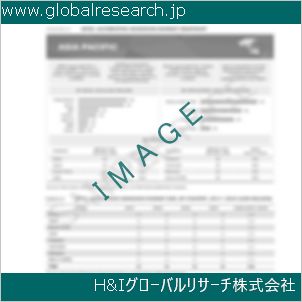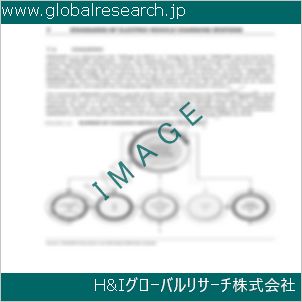Table of Contents
1 Industry Overview of Iodoform
1.1 Definition and Specifications of Iodoform
1.1.1 Definition of Iodoform
1.1.2 Specifications of Iodoform
1.2 Classification of Iodoform
1.3 Applications of Iodoform
1.3.1 Nuclear Application
1.3.2 Non-Nuclear Application
1.4 Industry Chain Structure of Iodoform
1.5 Industry Overview and Major Regions Status of Iodoform
1.5.1 Industry Overview of Iodoform
1.5.2 Global Major Regions Status of Iodoform
1.6 Industry Policy Analysis of Iodoform
1.7 Industry News Analysis of Iodoform
2 Manufacturing Cost Structure Analysis of Iodoform
2.1 Raw Material Suppliers and Price Analysis of Iodoform
2.2 Equipment Suppliers and Price Analysis of Iodoform
2.3 Labor Cost Analysis of Iodoform
2.4 Other Costs Analysis of Iodoform
2.5 Manufacturing Cost Structure Analysis of Iodoform
2.6 Manufacturing Process Analysis of Iodoform
3 Technical Data and Manufacturing Plants Analysis of Iodoform
3.1 Capacity and Commercial Production Date of Global Iodoform Major Manufacturers in 2023
3.2 Manufacturing Plants Distribution of Global Iodoform Major Manufacturers in 2023
3.3 R&D Status and Technology Source of Global Iodoform Major Manufacturers in 2023
3.4 Raw Materials Sources Analysis of Global Iodoform Major Manufacturers in 2023
4 Capacity, Production and Revenue Analysis of Iodoform by Regions, Types and Manufacturers
4.1 Global Capacity, Production and Revenue of Iodoform by Regions 2019-2024
4.2 Global and Major Regions Capacity, Production, Revenue and Growth Rate of Iodoform 2019-2024
4.3 Global Capacity, Production and Revenue of Iodoform by Types 2019-2024
4.4 Global Capacity, Production and Revenue of Iodoform by Manufacturers 2019-2024
5 Price, Cost, Gross and Gross Margin Analysis of Iodoform by Regions, Types and Manufacturers
5.1 Price, Cost, Gross and Gross Margin Analysis of Iodoform by Regions 2019-2024
5.2 Price, Cost, Gross and Gross Margin Analysis of Iodoform by Types 2019-2024
5.3 Price, Cost, Gross and Gross Margin Analysis of Iodoform by Manufacturers 2019-2024
6 Consumption Volume, Consumption Value and Sale Price Analysis of Iodoform by Regions, Types and Applications
6.1 Global Consumption Volume and Consumption Value of Iodoform by Regions 2019-2024
6.2 Global and Major Regions Consumption Volume, Consumption Value and Growth Rate of Iodoform 2019-2024
6.3 Global Consumption Volume and Consumption Value of Iodoform by Types 2019-2024
6.4 Global Consumption Volume and Consumption Value of Iodoform by Applications 2019-2024
6.5 Sale Price of Iodoform by Regions 2019-2024
6.6 Sale Price of Iodoform by Types 2019-2024
6.7 Sale Price of Iodoform by Applications 2019-2024
6.8 Market Share Analysis of Iodoform by Different Sale Price Levels
7 Supply, Import, Export and Consumption Analysis of Iodoform
7.1 Supply, Consumption and Gap of Iodoform 2019-2024
7.2 Global Capacity, Production, Price, Cost, Revenue, Supply, Import, Export and Consumption of Iodoform 2019-2024
7.3 USA Capacity, Production, Price, Cost, Revenue, Supply, Import, Export and Consumption of Iodoform 2019-2024
7.4 EU Capacity, Production, Price, Cost, Revenue, Supply, Import, Export and Consumption of Iodoform 2019-2024
7.5 China Capacity, Production, Price, Cost, Revenue, Supply, Import, Export and Consumption of Iodoform 2019-2024
7.6 Japan Capacity, Production, Price, Cost, Revenue, Supply, Import, Export and Consumption of Iodoform 2019-2024
8 Major Manufacturers Analysis of Iodoform
8.1 Manufacturer One
8.1.1 Company Profile
8.1.2 Product Picture and Specifications
8.1.2.1 Type I
8.1.2.2 Type II
8.1.2.3 Type III
8.1.3 Capacity, Production, Price, Cost, Gross and Revenue
8.1.4 Contact Information
8.2 Manufacturer Two
8.2.1 Company Profile
8.2.2 Product Picture and Specifications
8.2.2.1 Type I
8.2.2.2 Type II
8.2.2.3 Type III
8.2.3 Capacity, Production, Price, Cost, Gross and Revenue
8.2.4 Contact Information
8.3 Manufacturer Three
8.3.1 Company Profile
8.3.2 Product Picture and Specifications
8.3.2.1 Type I
8.3.2.2 Type II
8.3.2.3 Type III
8.3.3 Capacity, Production, Price, Cost, Gross and Revenue
8.3.4 Contact Information
8.4 Manufacturer Four
8.4.1 Company Profile
8.4.2 Product Picture and Specifications
8.4.2.1 Type I
8.4.2.2 Type II
8.4.2.3 Type III
8.4.3 Capacity, Production, Price, Cost, Gross and Revenue
8.4.4 Contact Information
8.5 Manufacturer Five
8.5.1 Company Profile
8.5.2 Product Picture and Specifications
8.5.2.1 Type I
8.5.2.2 Type II
8.5.2.3 Type III
8.5.3 Capacity, Production, Price, Cost, Gross and Revenue
8.5.4 Contact Information
…
9 Marketing Trader or Distributor Analysis of Iodoform
9.1 Marketing Channels Status of Iodoform
9.2 Traders or Distributors with Contact Information of Iodoform by Regions
9.3 Ex-work Price, Channel Price and End Buyer Price Analysis of Iodoform
9.4 Regional Import, Export and Trade Analysis of Iodoform
10 Industry Chain Analysis of Iodoform
10.1 Upstream Major Raw Materials Suppliers Analysis of Iodoform
10.1.1 Major Raw Materials Suppliers with Contact Information Analysis of Iodoform
10.1.2 Major Raw Materials Suppliers with Supply Volume Analysis of Iodoform by Regions
10.2 Upstream Major Equipment Suppliers Analysis of Iodoform
10.2.1 Major Equipment Suppliers with Contact Information Analysis of Iodoform
10.2.2 Major Equipment Suppliers with Product Pictures Analysis of Iodoform by Regions
10.3 Downstream Major Consumers Analysis of Iodoform
10.3.1 Major Consumers with Contact Information Analysis of Iodoform
10.3.2 Major Consumers with Consumption Volume Analysis of Iodoform by Regions
10.4 Supply Chain Relationship Analysis of Iodoform
11 Development Trend of Analysis of Iodoform
11.1 Capacity, Production and Revenue Forecast of Iodoform by Regions and Types
11.1.1 Global Capacity, Production and Revenue of Iodoform by Regions 2024-2029
11.1.2 Global and Major Regions Capacity, Production, Revenue and Growth Rate of Iodoform 2024-2029
11.1.3 Global Capacity, Production and Revenue of Iodoform by Types 2024-2029
11.2 Consumption Volume and Consumption Value Forecast of Iodoform by Regions, Types and Applications
11.2.1 Global Consumption Volume and Consumption Value of Iodoform by Regions 2024-2029
11.2.2 Global and Major Regions Consumption Volume, Consumption Value and Growth Rate of Iodoform 2024-2029
11.2.3 Global Consumption Volume and Consumption Value of Iodoform by Types 2024-2029
11.2.4 Global Consumption Volume and Consumption Value of Iodoform by Applications 2024-2029
11.3 Supply, Import, Export and Consumption Forecast of Iodoform
11.3.1 Supply, Consumption and Gap of Iodoform 2024-2029
11.3.2 Global Capacity, Production, Price, Cost, Revenue, Supply, Import, Export and Consumption of Iodoform 2024-2029
11.3.3 USA Capacity, Production, Price, Cost, Revenue, Supply, Import, Export and Consumption of Iodoform 2024-2029
11.3.4 EU Capacity, Production, Price, Cost, Revenue, Supply, Import, Export and Consumption of Iodoform 2024-2029
11.3.5 China Capacity, Production, Price, Cost, Revenue, Supply, Import, Export and Consumption of Iodoform 2024-2029
11.3.6 Japan Capacity, Production, Price, Cost, Revenue, Supply, Import, Export and Consumption of Iodoform 2024-2029
12 New Project Investment Feasibility Analysis of Iodoform
12.1 New Project SWOT Analysis of Iodoform
12.2 New Project Investment Feasibility Analysis of Iodoform
13 Conclusion of the Global Iodoform (CAS 75-47-8) Industry 2024 Market Research Report
| ※参考情報 ヨードホルム(Iodoform)は、化学式 CHI₃ で表される有機化合物で、簡単なハロアルカンの一種です。この化合物は、特有の黄色い結晶として存在し、ヨウ素を含むため非常に特徴的な臭いを持っています。ヨードホルムは1873年に発見され、その後多くの化学的、医療的応用が見出されています。 ヨードホルムの特徴としては、まずその極めて強い抗菌作用が挙げられます。このため、ヨードホルムは医療の分野で消毒剤や抗菌薬として利用されることが多いです。また、化学的には比較的安定しており、常温で固体の状態を保ちますが、熱や光に対しては不安定な性質を持つため、適切な保管が求められます。 次に、ヨードホルムの主な用途の一つとして、消毒剤や抗菌剤としての利用があります。特に、外科手術や創傷の処置において、その抗菌効果によって感染を防ぐために使用されます。ヨードホルムは、皮膚や粘膜に対して安全であるため、短期間の使用であれば敏感な部位にも適用することが可能です。また、農業分野では植物の病害に対する防除剤としても利用されています。 さらに、ヨードホルムはその反応性から、化学合成の中間体としても有用です。特に、有機合成の分野では、さまざまな化合物を合成する際の反応試薬として利用され、特にケトンやアルデヒドの合成において重要な役割を果たします。これはヨードホルムが特定の化学反応において触媒として働くためです。 ヨードホルムは、化学的に非常にユニークな性質を持つため、いくつかの関連技術が進化しています。例えば、ヨードホルムを利用した新しい合成手法や、より安全で効率的な反応条件を見つけるための研究が行われています。また、環境への影響を考慮し、より持続可能な方法での合成が模索されており、これによりヨードホルムの利用範囲がさらに拡大する可能性があります。 ヨードホルムの製造方法には、いくつかの異なるプロセスがありますが、一般的には、メタンとヨウ素の反応によって得られます。この反応は、厳しい条件下で行われるため、適切な安全対策が必要です。また、ヨードホルムの生産においては、その高い反応性を考慮した設備が求められます。 その一方で、ヨードホルムは使用に際して注意が必要な化合物でもあります。特に皮膚や眼に対して刺激性があり、過剰接触は健康に害を及ぼす可能性があります。このため、ガイドラインや安全基準に従った取り扱いが重要です。さらに、環境中での分解性にも配慮が必要であり、持続可能な使用のためにその影響を評価する研究が進められています。 ヨードホルムの今後の展望としては、より効率的な合成法の開発や、新たな応用分野の発見が期待されています。また、医療や農業の分野での持続可能性を考慮した利用法が模索される中で、ヨードホルムの価値はますます高まると考えられています。環境に配慮した新しい技術の開発は、ヨードホルムの利用をより一層促進し、さらなる応用可能性を広げるでしょう。 以上のように、ヨードホルムはその独自の特性からさまざまな分野で利用されていますが、その取り扱いには十分な注意が必要です。今後の研究によって、さらに多様な応用が見込まれる化合物であり、既存の技術に新たな可能性をもたらすことが期待されています。 |
❖ 免責事項 ❖
http://www.globalresearch.jp/disclaimer












